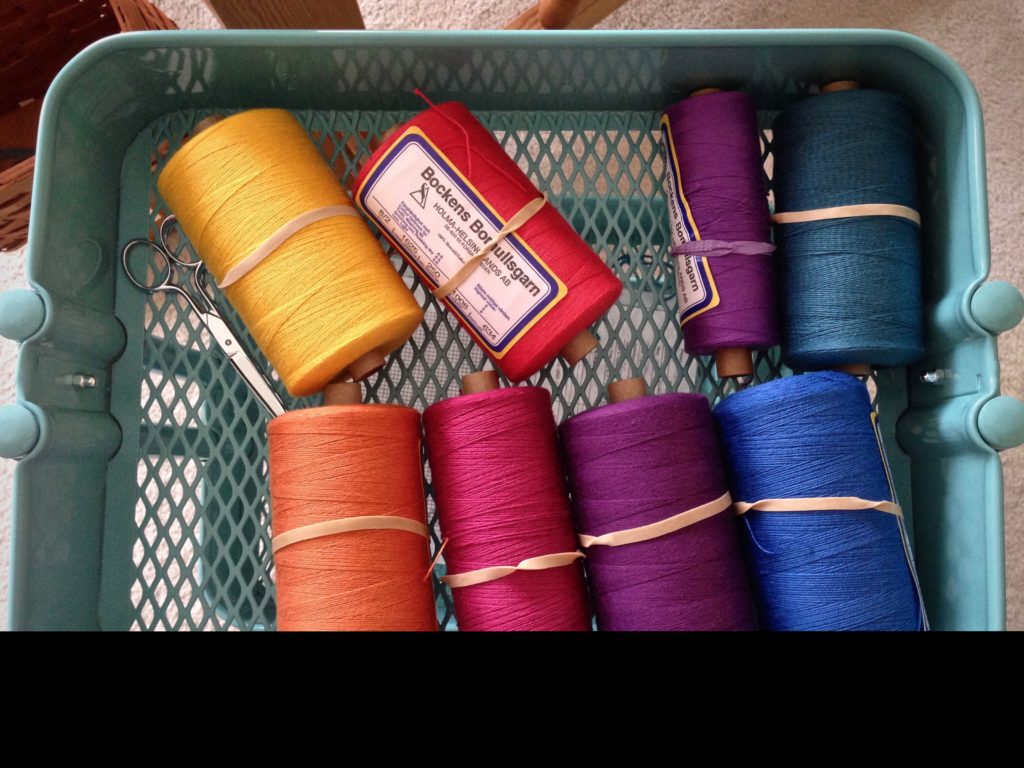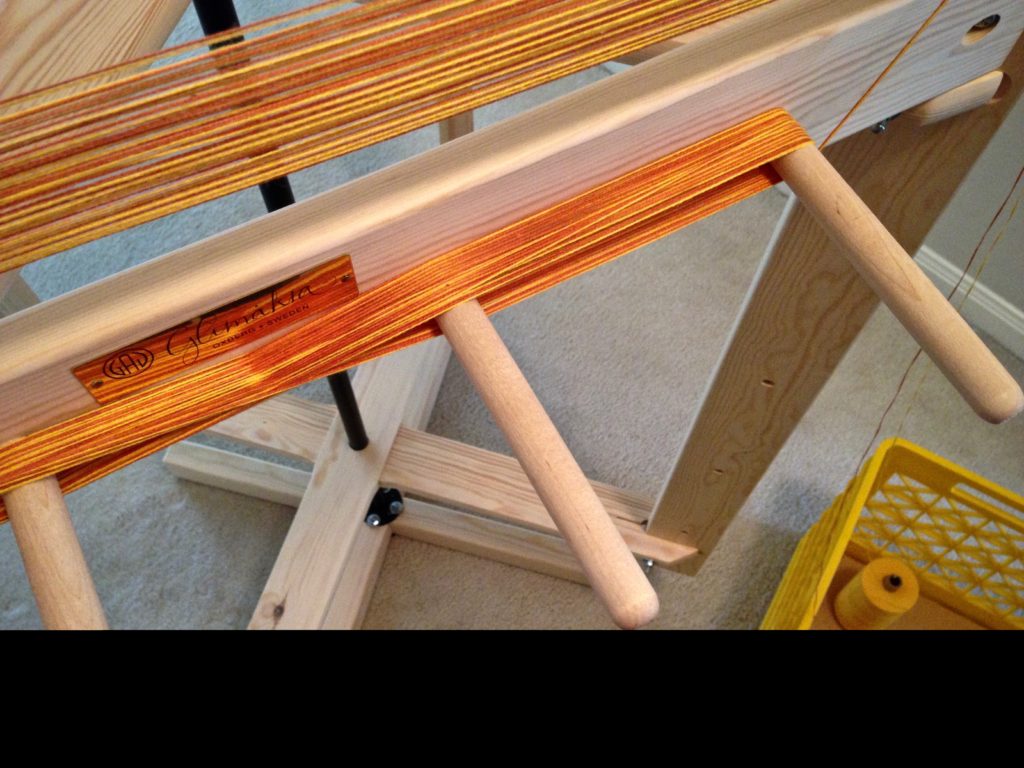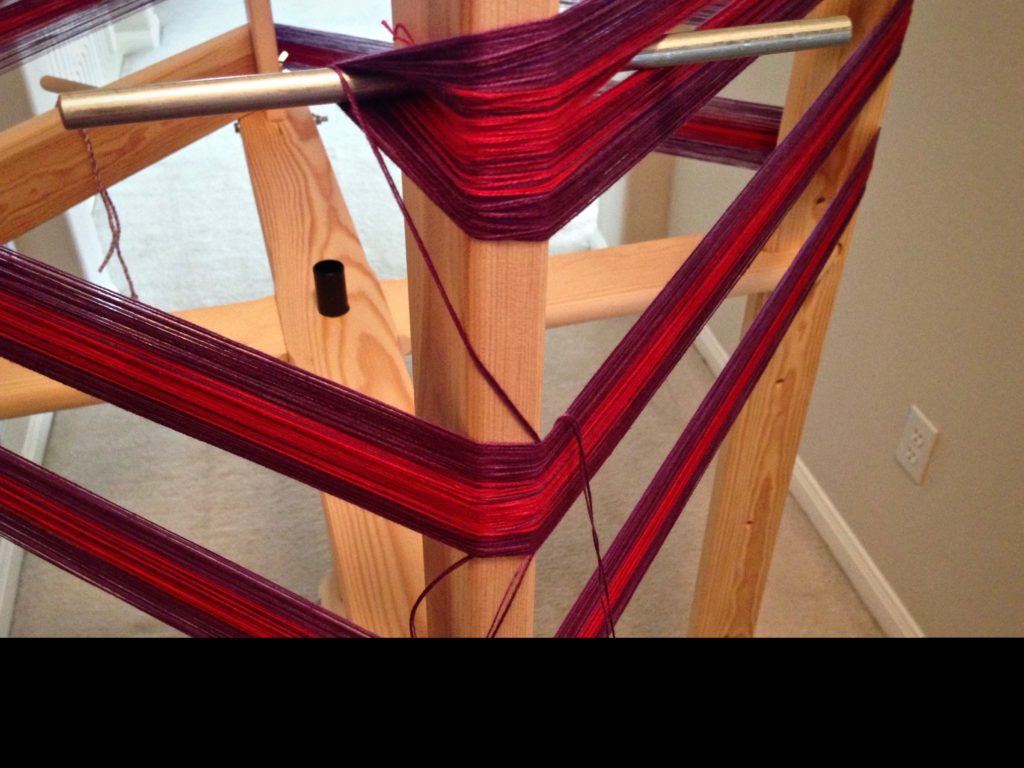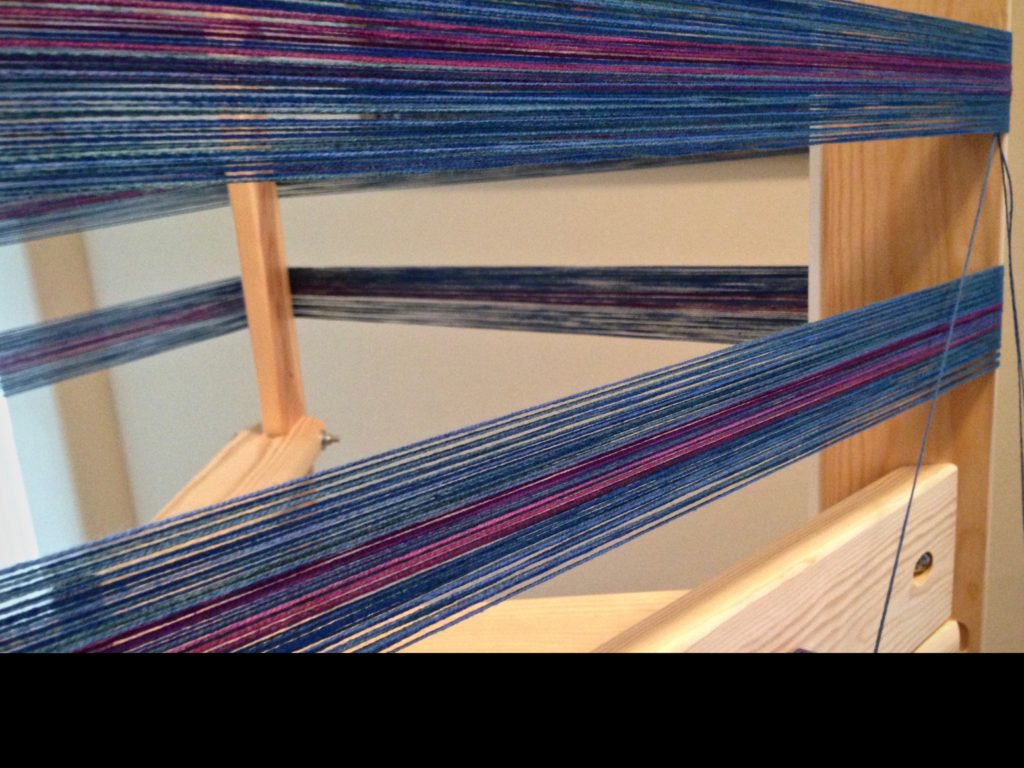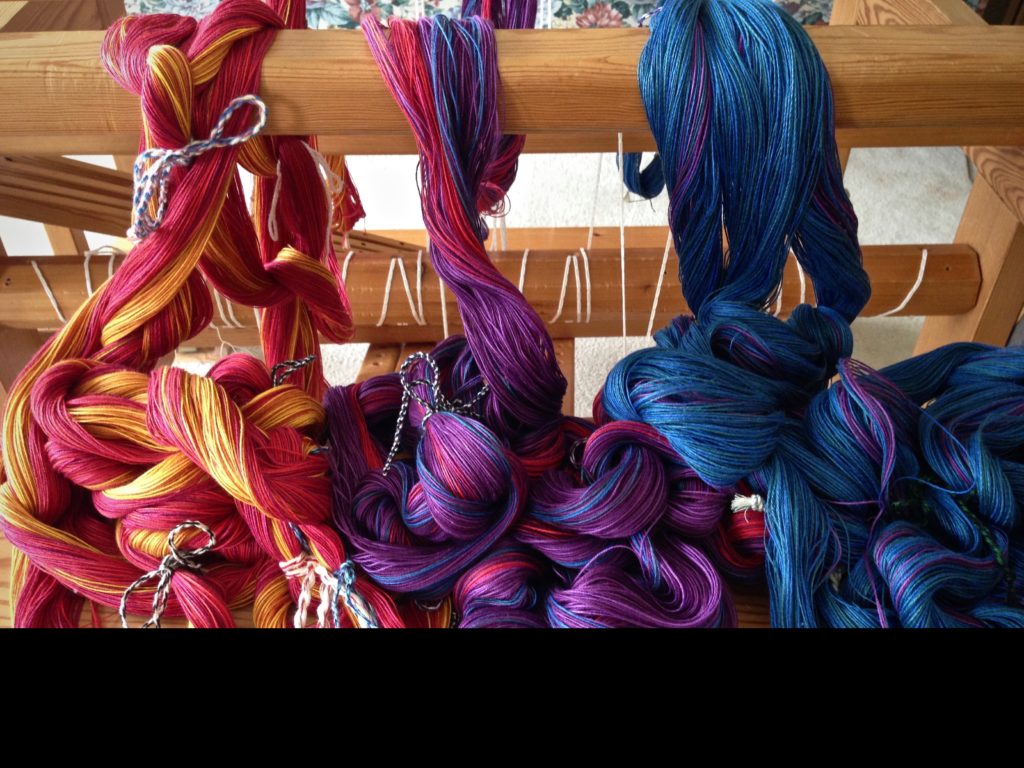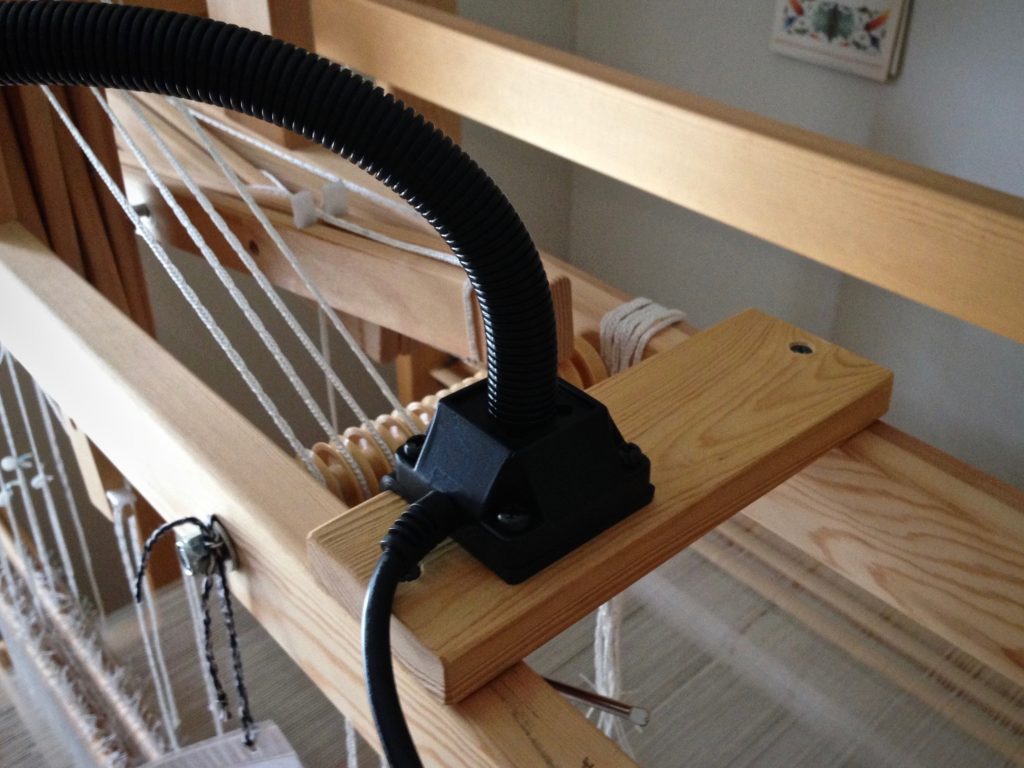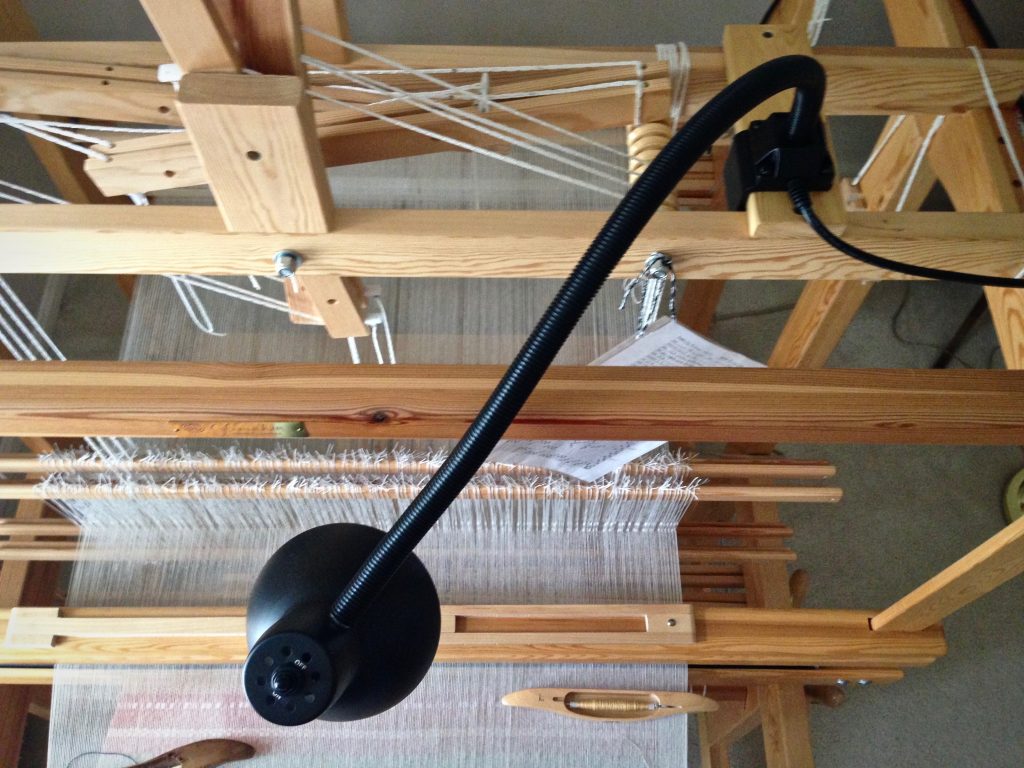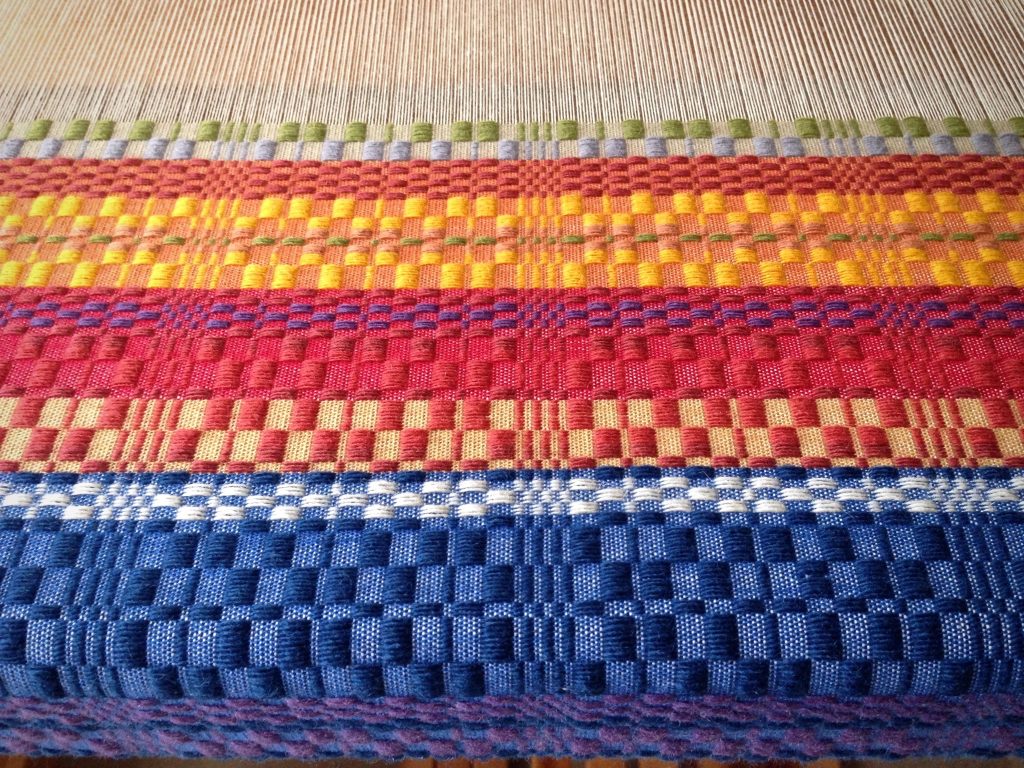I can let my mind wander for this part. I am threading 664 warp ends in a straight draw, one warp end at a time (1-2-3-4). This is repetitive and easy. Relaxing. Of course, I have safeguards to prevent mind-wandering errors. First, I count the ends into threading groups before I start threading. Second, I double-check each threaded group of heddles, one warp end at a time.
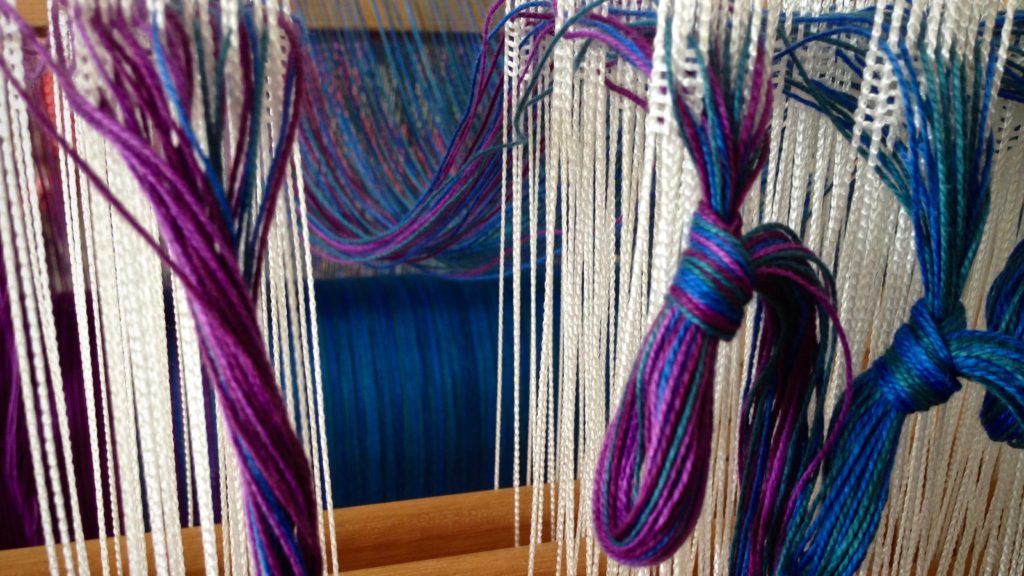
In quiet moments like this, my mind drifts over recent events, and ponders plans for the near and distant future. I think about friends and family–dear ones going through struggles. I remember things I’m thankful for, and who I’m thankful to. I often wish threading could go on a little longer. I like to linger there.


The wondrous thing is that I can turn all these thoughts into prayers. The Lord hears us when we pray. The Lord hears the sound of your voice. In our quiet moments we have the sweet assurance that when we call upon the Lord, he bends down and listens. Instead of wishful thinking or fruitless worrying, prayer turns thoughts into faith.
May you linger in quiet moments.
All the best,
Karen

